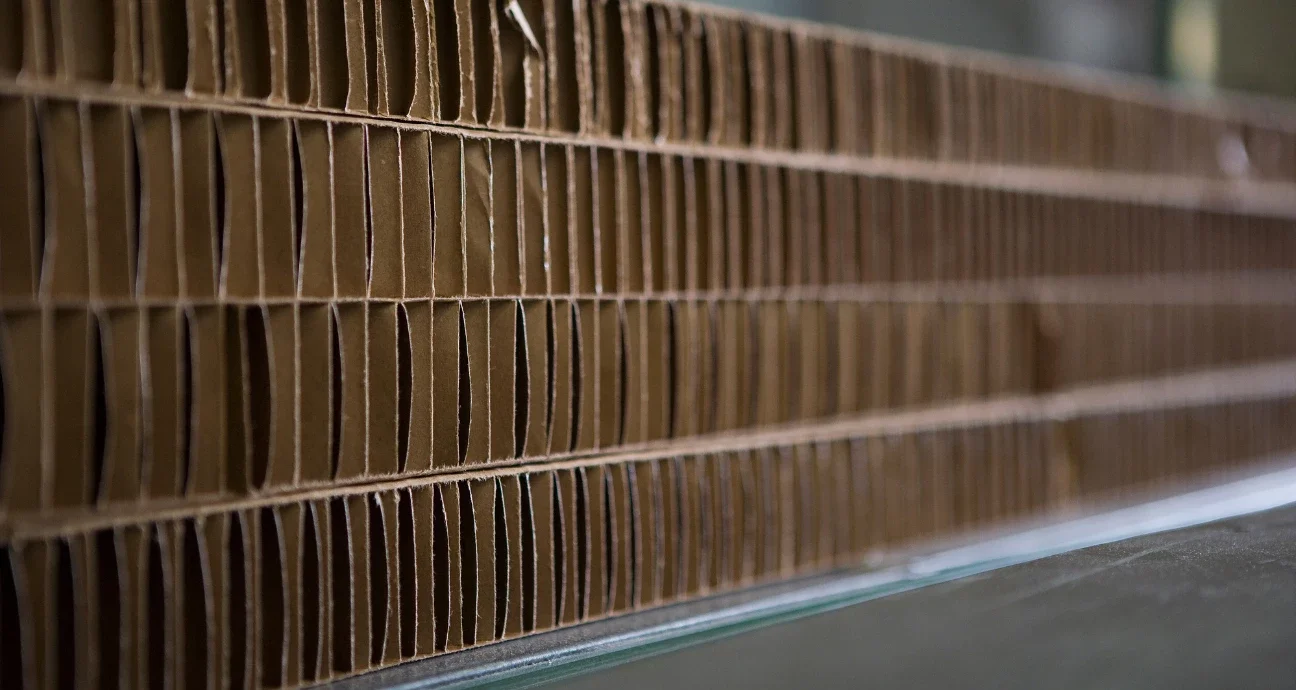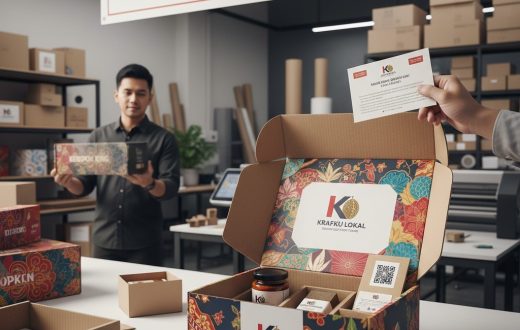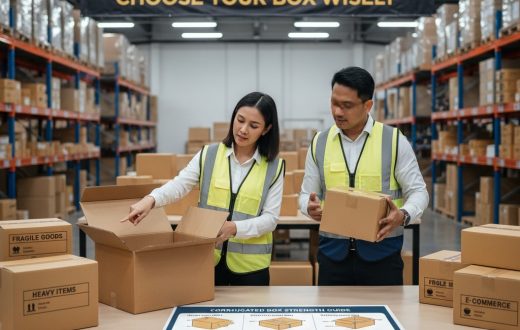There are a plethora of options to consider when deciding the type of packaging to use.
While corrugated cardboard packaging has gained popularity in recent years, many are still not familiar with the intricacies of corrugated boards. This is why in this post we aim to explain everything about corrugated boards.
Before we delve into discussing corrugated board grades, let’s first understand what corrugated board actually is:
What is Corrugated Board?
Corrugated board, also known as corrugated fiberboard or “combined board,” consists of two primary components: the liner and the medium. These components are constructed from a specialized type of heavy paper known as containerboard.
The liner board features both the inside and outside liners, while the medium is a wavy, ruffled-shaped paper sandwiched between the two liners, forming three layers of paper.
The linerboard serves as the flat material of the board and is typically found on the outer surfaces, although it can also be present on the inside for certain structures. It adheres to the medium, providing stability and protection to the overall structure.
The medium, on the other hand, is the paper that is formed into arches or flutes using a process called single-facing. These arches or flutes are then glued between the linerboard facings. The medium’s corrugated structure adds strength and rigidity to the board, making it suitable for various packaging applications.
How Corrugated Boards are Formed
Rolls of paper are transported from the paper mill to a corrugating plant where layers of paper are crimpled and glued to form corrugated cardboard. The corrugated cardboard is then cut into various sizes, printed, folded to various shapes.
Each side of the fluted material is then glued to the flat paper liner to form corrugated box packaging that you see often at the supermarket. The glue fixes the flutes in position and adds stability and rigidity to the papers.
Benefits of Corrugated Board
Corrugated cardboard has a lot of benefits for packaging including:
- Corrugated carton box packaging is environmentally friendly
- Highly durable
- Lightweight with a high strength-to-weight ratio
- They are cost-effective
- Corrugated box packaging offers product protection
Different Wall Types
a. Triple Wall
As the name implies, the triple wall corrugated board comprises three pieces of fluted material glued between four pieces of the liner.
Triple wall corrugated board is commonly used for box packaging because of its lightweight. Because of this exceptional feature, manufacturers use the triple wall as a substitute for wooden shipping crates for heavier or larger shipments.
b. Double Wall
Double-wall corrugated board consists of two pieces of fluted material glued between three pieces of the liner. When stacked, this board is resistant to breaking.
Wide usage of this board can be found in larger industrial containers.
c. Single Wall
A simple, single wall corrugated board consists of one piece of fluted material glued between two pieces of the liner.
Common Appearance
Corrugated cardboards can vary in appearance depending on what paper is used. Howbeit, all boards are 100% recyclable and made from sustainable fibres. Below is a list of the available paper grades for inner and outer liners when manufacturing corrugated boards.
NOTE: Both WB & SC are less often used for liners but most commonly used for flutes.
Different Flute Types
When discussing this topic, it is important to note that different board strengths and thicknesses are obtained through various liner board and medium combinations.
Many people think that stronger packaging boxes are often made from thicker cardboard – no, that is a wrong ideology!
You need to understand that the different kinds of corrugated boards come to be as a result of different technical specifications which are based on the paper makeup of the corrugated board grade.
Manufacturers simply alter the flutes to obtain different board thicknesses.
Below, we outline the different flute types.
1. A Flute
A flute offers excellent stiffness quality which enables it to provide the greatest cushioning properties for heavy or fragile products. Manufacturers combine different flute profiles in one piece of combined board.
This technique allows designers to adjust cushioning strength, compression strength, and the total thickness of the combined board. A flute can be applied in a wide range of export uses.
2. B Flute
B Flute is used for canned goods and displays as they provide very good crushing resistance and stacking strength.
3. C Flute
C Flute has excellent stacking, cushioning, and printing properties. These properties make it ideal for glass, dairy, and furniture uses.
4. R Flute
R Flute provides a superior printing surface and the greatest crush resistance. Ideally used for die-cut custom carton boxes.
5. AC Flute
AC Flute is an excellent choice for pallet bins and other heavy-duty industrial applications.
6. BC Flute
BC Flute has exceptional puncture resistance and stacking strength. It is introduced where the product requires a higher degree of protection or where products are bulkier and heavier.
7. RB Flute
RB Flute offers a superior printing surface which makes it ideal for heavier applications, for instance, where the product may carry some weight that requires additional protection.
8. AAC Flute
AAC Flute is widely used as a lightweight substitute for wooden shipping crates for heavier or larger shipments. It is used extensively carrying bulk pallet loads of fruit and vegetables in the produce market.
In a Nutshell
Corrugated boxes play an important role in the packaging industry. We hope this post gives you a clear picture of the grades of corrugated boxes.
For further information, feel free to get in touch with our specialists.







